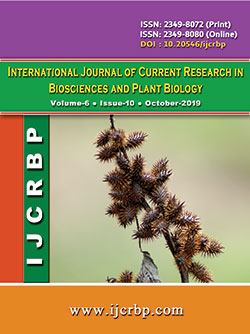 |
Online ISSN : 2349-8080 Issues : 12 per year Publisher : Excellent Publishers Email : editorinchiefijcrbp@gmail.com |
The comparative antibacterial effect of aqueous extract of Carica papaya leaves and Carica papaya nanoparticles against selected bacteria
Silver salt and its colloidal formulations have been used since ancient times to treat ulcers, burns chronic wounds and other infections but its use was discontinued due to the interfering effects of salt and the development of new antibiotics, However, almost a decade back, renew interest grew for nanosilver owing to its high surface area to volume ratio and size-dependent unique optical, electrical, and thermal properties. Silver nanoparticles were synthesized using eco-friendly method with extract of Carica papaya as reducing and stabilizing agent. The silver nitrate solution was used as precursor. A visible colour change from yellow to dark brown confirmed the formation of the nanoparticles and the UV-Vis spectroscopy showed an absorbance of 0.69 at wavelength 435 nm for the silver nanoparticle. The antimicrobial activity of the synthesized nanoparticles was studied against Escherichia coli, Salmonella typhi and Staphylococcus aureus. The silver nanoparticles biosynthesized showed antimicrobial activity against the test isolates with zone of inhibition ranging from 10-15mm. Antimicrobial activity of silver nanoparticles was statistically significant as compared to Chloramphenicol at 0.05% level of confidence. Generally, the Minimum Inhibitory Concentration (MIC) and Minimum Bactericidal Concentration (MBC) values for Silver nanoparticle ranged from 0.22 – 0.42 g/ml and 1 – 30 cfu/ml respectively, against the test organisms. S. aureus was most sensitive while E. coli and S. typhi were least sensitive to silver nanoparticles, while the activities of C. papaya extract ranged from 0.32 – 0.42 g/ml and 6 – 36 cfu/ml respectively, against the test organisms E. coli and S. aureus were more sensitive while S. typhi was least sensitive to C. papaya nanoparticles.
